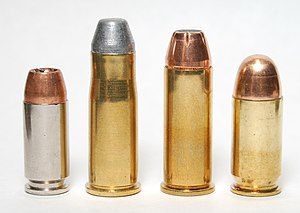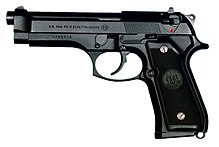Sunday, May 2, 2010
Privacy Policy
If you require any more information or have any questions about our privacy policy, please feel free to contact us by email at erik.ngablaks@gmail.com.
At http://interiordecoratingschools.blogspot.com/, the privacy of our visitors is of extreme importance to us. This privacy policy document outlines the types of personal information is received and collected by http://interiordecoratingschools.blogspot.com/ and how it is used.
Log Files
Like many other Web sites, http://interiordecoratingschools.blogspot.com/ makes use of log files. The information inside the log files includes internet protocol ( IP ) addresses, type of browser, Internet Service Provider ( ISP ), date/time stamp, referring/exit pages, and number of clicks to analyze trends, administer the site, track user’s movement around the site, and gather demographic information. IP addresses, and other such information are not linked to any information that is personally identifiable.
Cookies and Web Beacons
http://interiordecoratingschools.blogspot.com/ does use cookies to store information about visitors preferences, record user-specific information on which pages the user access or visit, customize Web page content based on visitors browser type or other information that the visitor sends via their browser.
DoubleClick DART Cookie
.:: Google, as a third party vendor, uses cookies to serve ads on http://interiordecoratingschools.blogspot.com/.
.:: Google's use of the DART cookie enables it to serve ads to users based on their visit to http://interiordecoratingschools.blogspot.com/ and other sites on the Internet.
.:: Users may opt out of the use of the DART cookie by visiting the Google ad and content network privacy policy at the following URL - http://www.google.com/privacy_ads.html
Some of our advertising partners may use cookies and web beacons on our site. Our advertising partners include ....
Google Adsense
These third-party ad servers or ad networks use technology to the advertisements and links that appear on http://interiordecoratingschools.blogspot.com/ send directly to your browsers. They automatically receive your IP address when this occurs. Other technologies ( such as cookies, JavaScript, or Web Beacons ) may also be used by the third-party ad networks to measure the effectiveness of their advertisements and / or to personalize the advertising content that you see.
http://interiordecoratingschools.blogspot.com/ has no access to or control over these cookies that are used by third-party advertisers.
You should consult the respective privacy policies of these third-party ad servers for more detailed information on their practices as well as for instructions about how to opt-out of certain practices. http://interiordecoratingschools.blogspot.com/'s privacy policy does not apply to, and we cannot control the activities of, such other advertisers or web sites.
If you wish to disable cookies, you may do so through your individual browser options. More detailed information about cookie management with specific web browsers can be found at the browsers' respective websites.
Monday, April 19, 2010
PSM pistol

The PSM (Pistolet Samozaryadny Malogabaritny, Russian for "small self-loading pistol") was designed by the Tula Design Bureau in 1969 as a self-defense firearm for law enforcement and military officers of the USSR. The pistol entered production at the Izhevsk Mechanical Plant in 1973.
The PSM is a blowback-operated handgun with a double action trigger and slide mounted manual safety without a slide stop. The grip panels are made from thin aluminum and new model with hard plastic. The weapon is made from steel.
The PSM was designed around the newly developed 5.45x18mm cartridge, which was developed for the weapon by Precision Mechanical Engineering Central Research Institute. The cartridge is capable of penetrating 55 layers of kevlar at realistic engagement distances.[citation needed] This cartridge has a bottlenecked case and a spitzer-pointed jacketed bullet, providing performance superior to the .22 LR and .25 ACP (6.35x16mmSR Browning) rounds.
The pistol was primarily intended for army high command staff. However, owing to its insignificant dimensions, especially small thickness (21 mm across the safety catch), it soon became popular with security (KGB) and law enforcement (militsiya) personnel. The PSM was also appreciated by higher echelon Communist Party functionaries.[citation needed]
An export model designated the IZh-75 was produced in .25 ACP.[Revolver mouseguns

Examples of revolver mouseguns include the North American Arms Mini Revolver, which is a spur trigger design with birdshead grips. The North American Arms Mini Revolver is styled very much like popular pocket revolvers of the 19th Century, but is made entirely of stainless steel.
Smith & Wesson's "J-Frame" series of revolvers are a common choice for mouseguns. They are generally more reliable than their automatic counterparts, and offer an exceptional power-to-weight ratio, especially the lightweight AirLite and Airweight lines. On the other hand, they offer only five shots (auto mouseguns often hold more rounds), and have considerably greater recoil, especially in .357 magnum.
mousegun pistol
 A mousegun is most often considered a category of small revolver, or semi-automatic handgun intended for self defense. Typically such small pistols are of .380 ACP (9mm Short) caliber or less, with .32 ACP and .22 Long Rifle calibers also being common. The term is used to describe a class of small handguns. The term is also sometimes used to refer to rifles firing bullets smaller than .30 caliber, such as the .223/5.56mm.
A mousegun is most often considered a category of small revolver, or semi-automatic handgun intended for self defense. Typically such small pistols are of .380 ACP (9mm Short) caliber or less, with .32 ACP and .22 Long Rifle calibers also being common. The term is used to describe a class of small handguns. The term is also sometimes used to refer to rifles firing bullets smaller than .30 caliber, such as the .223/5.56mm.
38-40 Winchester bullet pistol
 The .38-40 Winchester is a 10 mm cartridge that was introduced by Winchester in 1874 and is derived from their .44-40 Winchester. Though this cartridge was introduced for rifles, it is a better pistol cartridge than rifle cartridge. It is not particularly well suited to hunting game but it is excellent for self defense. Current loadings are intended for pistols[1].
The .38-40 Winchester is a 10 mm cartridge that was introduced by Winchester in 1874 and is derived from their .44-40 Winchester. Though this cartridge was introduced for rifles, it is a better pistol cartridge than rifle cartridge. It is not particularly well suited to hunting game but it is excellent for self defense. Current loadings are intended for pistols[1].
"pistol" and "handgun"

A handgun is a firearm designed to be held and operated by one hand, with the other hand optionally supporting the shooting hand. This characteristic differentiates handguns as a general class of firearms from their larger counterparts: long guns such as rifles and shotguns (which are held in both hands and usually braced against the shoulder), mounted weapons such as machine guns and autocannons, and larger weapons such as artillery.
Beretta 92FS

In 1971, Smith & Wesson offered a safe double-action, high-capacity pistol with its Model 59. CZ launched its CZ-75 in 1975. Beretta introduced its Beretta 92 in 1976. Glock introduced the groundbreaking Glock 17 in 1982, and SIG-Sauer introduced its model SIG P226 in 1983. Walther introduced their high capacity P88 in 1988. In the early 90s, Heckler & Koch combined what they thought were the most desirable attributes of semi-autos in their pistol, the HK USP. In 1995, Kel-Tec introduced their first compact 9mm Parabellum pistol, the Kel-Tec P11, designed for concealed carry. In 1999, Kel-Tec introduced their extremely popular .32 ACP P-32 for deeply concealed carry. Both of the Kel-Tec pistols are double-action-only (DAO) designs.
After the Second World War, the almost universal trend has been for self-loading, semi-automatic pistols to replace revolvers for military use, although the transition has been slower among police and civilian use. Today, revolvers are mainly used for civilian self-defense, hunting, plinking, and target practice. Semi-automatic pistols, though, are becoming by far the most popular for deeply concealed carry by licensed civilians, for use as primary handguns for police and military use, for use as backup guns for police use, and for use where the 5 or 6 shots of a revolver are deemed inadequate.

